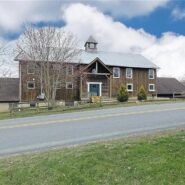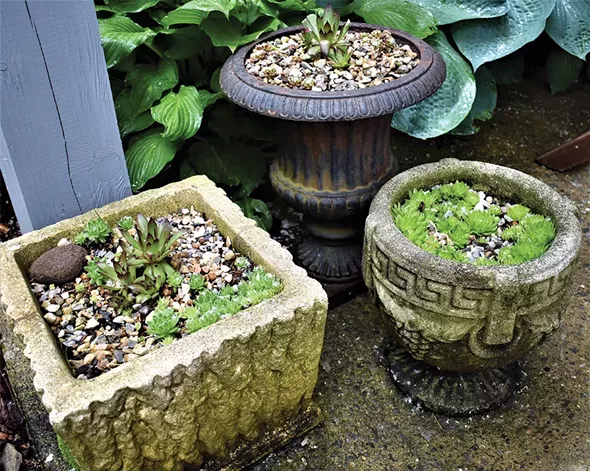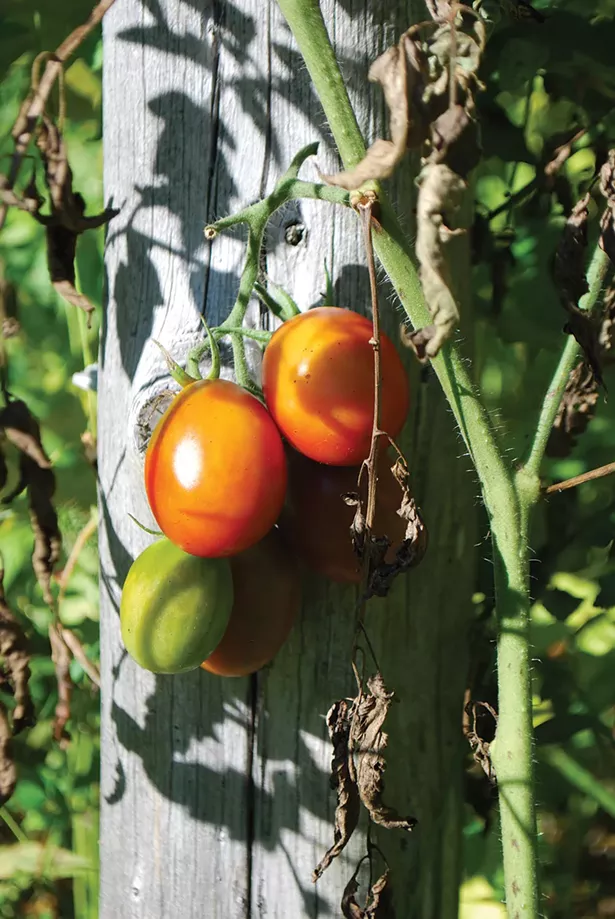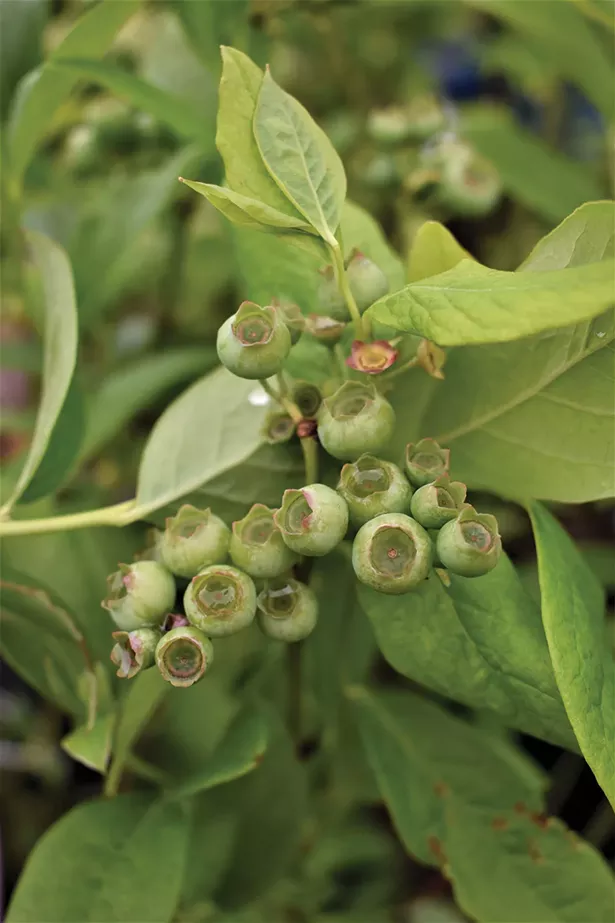Garden By Numbers
Michelle Sutton | July 24, 2017Some of the most useful techniques I’ve learned in the realm of horticulture involve making simple calculations and interpreting measurements. Here are the garden tips I’ve used the most.
❀ Some daffodil or other bulbs have come into your life. Absent planting directions, you can use the general guideline to plant the bulbs at a depth twice their height. For example, if it’s a daffodil bulb that’s 2 inches tall, plant it so that the top of the bulb is 4 inches under the earth. What about spacing between bulbs? I prefer a naturalistic look, so I don’t follow spacing directions. I bounce those bulbs into the air and plant them where they land.
❀ Most plants require at least an inch of water a week via rain and/or hand-watering. If you’re watering by hand and don’t know how much you are actually applying (it’s often not as much as you think), put a can out and see how long it takes to sprinkle your way to an inch of water (it’s often longer than you think).
❀ Two vs. three in design: With trees and shrubs especially, a pair of plants of the same variety is pleasing to the eye when it’s flanking an entrance to a building or garden. In that case, the viewer experiences the two plants plus the central focal point as a pleasing symmetry. However, if you put a pair of specimen plants of the same variety together in a garden bed, this will not be visually pleasing, so go for three. Three proximate specimens are perceived as an agreeable, unified whole, while two is something that the eye wants to divide. This is also true for neighboring showy garden pots—three’s better than two.
❀ A soil pH test looks at the relative acidity or alkalinity of your soil. Most plants thrive in the 6.0 to 7.0 (slightly acid to neutral) range of soil pH, but some plants prefer more acidic conditions, like blueberries (4.0 to 5.0), rhododendrons (4.0 to 5.5), mountain laurels (5.0 to 5.5), and azaleas (4.5 to 6.0).
❀ Calculating how many groundcover plants you need for a given area: Let’s say you are putting in native pachysandra and read that it should be planted 12 inches on center. Enter that figure and the area of your planting bed in an online “plant calculator” to find out how many seedlings you will need.
❀ You’re putting in a new garden and wonder how much compost you need to have delivered, or you’re mulching an existing garden with bark mulch. There are “mulch calculators” online in which you enter the area of your garden bed(s) and the depth of material that you desire, and the calculator spits out how many cubic yards (for larger jobs) or how many bags of product (smaller jobs) you will need.
What depth measurement should you use? Unless the existing soil is already loamy and agreeable, when I create new gardens I order enough compost to provide a depth of at least 4 to 6 inches. For mulching existing beds with bark mulch, figure no more than 3 to 4 inches in depth—you don’t want to starve roots of oxygen.
❀ How do you interpret the number 10-10-10 on a bag of synthetic fertilizer, or 2-6-4 on a bottle of kelp and fish meal fertilizer? The three numbers together are called the fertilizer analysis or N-P-K Analysis and show you the content of three macronutrients. The first number tells you what percentage of the product by weight is elemental nitrogen (N); the second number tells you the percentage by weight of phosphate (P2O5, which yields phosphorus: P); and the third number indicates the amount of potash (K2O, which yields potassium: K).
Nitrogen is important for healthy and rapidly growing stems and foliage; phosphorus is needed for robust root growth and for prolific flower and fruit formation; and potassium performs a variety of functions, including contributing to good root formation and fruit development and helping plants fend off disease.
The N-P-K Analysis you choose depends on what kind of crop you are growing and/or what phase of growth your crop is in. If your goal is abundant lettuce growth, a higher N-content fertilizer, such as 10-5-5, is in order. This is also true for young tomato plants when they are shooting up stems and putting out foliage early in the season. However, when your tomato plants are about to flower and set fruit, switch to a fertilizer with a higher middle (phosphate) number, such as 2-6-4. That will help the plant successfully redirect its energy away from foliage and toward flowers and fruit.
I have an in-house source of macronutrients for my garden. Our house bunnies, Graham and Dani, produce “bunure” in a litter box; the N-P-K Analysis for rabbit manure is 2.4-1.4-.60. That’s more nitrogen and phosphorus than chicken manure (1.1-.80-.50), cow manure (.25-.15-.25), or horse manure (.70-.30-.60).
❀ Planting a tree is a big investment on many levels, so it should be done thoughtfully. Say you wish to plant an oak tree but want to make sure the oak is going to have adequate above- and below-ground space. The above-ground part is easy: Find out the potential mature height and width of your tree species to make sure the tree’s canopy will have room to mature without growing into your house or into overhead utility wires.
For the below-ground assessment, make sure there will be adequate soil volume available to the tree’s roots. The proximity of asphalt, sidewalk, buildings, and underground utilities—these are the kinds of factors that limit space for tree roots to explore. (Keep in mind that for trees, critical fine roots extend laterally, well beyond the canopy’s edge.) Here’s how you calculate adequate soil volume/below-ground space.
Look up the potential mature spread of the tree you are considering. Estimate that your tree will reach 75 percent of the optimum, then take half of that number. This is your radius, r.
Calculate 3.14 x r2 to get the “crown projection,” the area of the circle within the dripline of the tree.
For every square foot of crown projection, make sure there will be 2 cubic feet of soil available for your tree at maturity.
Example:
You read that the beautiful swamp white oak (Quercus bicolor), a very tough oak that withstands both wet and dry conditions and spreads up to 60 feet at maturity. Seventy-five percent of 60 is 45. Half of that is 22.5, so r = 22.5 and r2 = 506.
The crown projection would be (3.14)(506) = app. 1590 square feet. For every square foot of crown projection, make sure there’s 2 cubic feet of soil available. Thus, 1590 x 2 = 3180 cubic feet of soil volume is needed.
Since roots are rarely found deeper than 3 feet (because of decreasing levels of oxygen), use 3 feet as your depth dimension, unless you know your planting site to be shallower—like if you know that you hit bedrock at 1.5 feet. To continue with our example, 3180/3 = 1060, so the footprint of usable soil in your site must be at least 1060 square feet. This is equivalent to a below-ground volume of soil that’s about 33 feet wide, 33 feet long, and 3 feet deep. Another permutation could be 20 feet wide, 53 feet long, and 3 feet deep; for those with shallow bedrock, a permutation could be 46 feet wide, 46 feet long, and 1.5 feet deep.
Read On, Reader...
-

Jane Anderson | April 1, 2024 | Comment A Westtown Barn Home with Stained-Glass Accents: $799.9K
-

Jane Anderson | March 25, 2024 | Comment A c.1920 Three-Bedroom in Newburgh: $305K
-

-

Jane Anderson | January 30, 2024 | Comment A Renovated Three-Story Beauty in Poughkeepsie: $695K



